2019 BMW 3 Series India review, test drive
The all-new 3 Series is now on sale in India. And we’ve got our first taste of the car in the popular 320d guise.
Published on Aug 21, 2019 03:02:00 PM
58,315 Views
Follow us on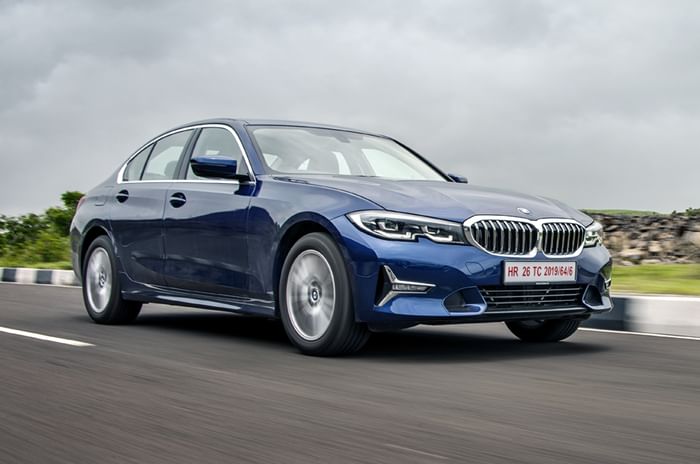
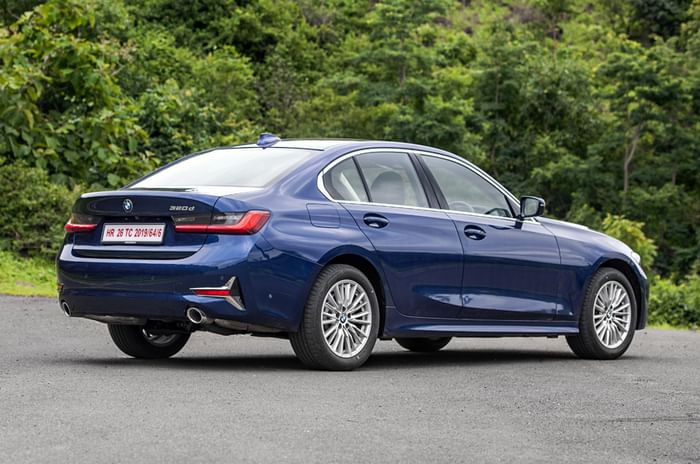
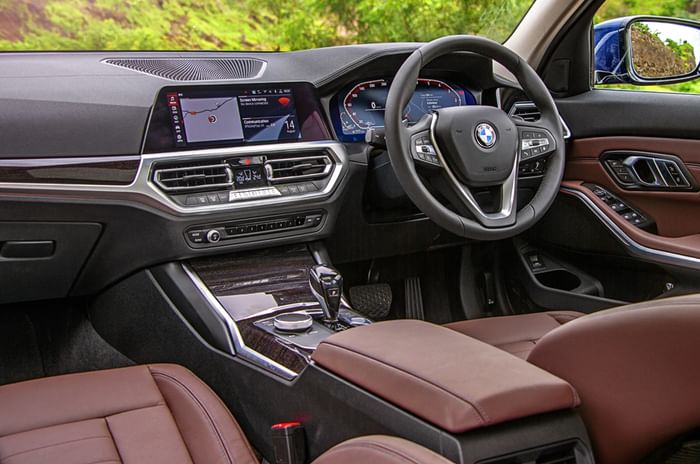

What is it?
The BMW 3 Series has always been the defining sports sedan among like-sized luxury models. However, this seventh generation model’s job description also requires it to be comfier and more luxurious than ever before. In brief, BMW has set out to make the ultimate, well-rounded 3 Series.
We’ll get into the specifics of the driving experience in a bit, but first a word on how the latest 3 looks. What’s quite evident is that the latest BMW 3 Series has grown in size. It’s a fairly substantial 76mm longer than the sixth-gen model, though height is up by just 1mm. The wheelbase is longer too. It’s still every bit the low-slung sedan like the 3s before, though there’s enough to tell you that this one is the latest in the family.
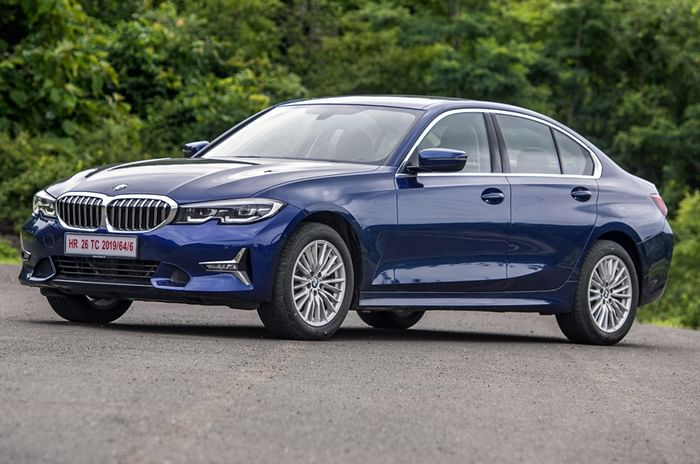
Like all new BMWs, the grille is the focal point up front. It’s the largest on a 3 Series yet but doesn’t look oversized or awkward, at least to my eyes. A detail BMW fans will note is that the kidney grille is now framed by a single chrome surround. The grille also serves as the car’s breathing apparatus, with louvres that open only when the engine needs cooling air. Also cool are the shapely full-LED headlights and the T-shaped elements lower down, but the bumper on this Luxury Line car is perhaps a bit too subtle for a 3. The car’s rear too is neat and tidy, but also a bit anonymous. Dual exhausts are standard but perhaps you should consider the M Sport trim if visual drama is what you want.
| BMW 3 Series Price, Mileage, Specifications, Features and Variants | |
|---|---|
| Brand | BMW |
| Model Name | 3 Series |
| BMW 3 Series Price | ₹ 80.08 lakh |
| BMW 3 Series Range/Mileage | Petrol : 13.02kpl |
| BMW 3 Series Specifications | Sedan | 4 doors | 5 seats View All Specs |
| BMW 3 Series Features | LED headlight | 14.9 Touchscreen display | 6 airbags View All Features |
| BMW 3 Series Variants | M340i xDrive 3.0 Petrol View All Variants |
What’s it like on the inside?
Like all 3s before, the latest one seats you low down and the driving position is really sporty. You get an excellent view out, thanks in part to the relatively thin pillars and low dash cowl. The dash is modern BMW fare – it’s neatly laid out and positions the touchscreen high up for easy access. Overall quality is good and there are also some high-end elements, like the knurled controllers for the air-con vents. At the same time, the 3 Series cabin isn’t quite up there with pricier BMWs, with a fair few ordinary bits in clear sight. The gear lever, for one, doesn’t look rich enough and there are some average plastics in the region of the iDrive controller too. The power window switches also look last-gen.
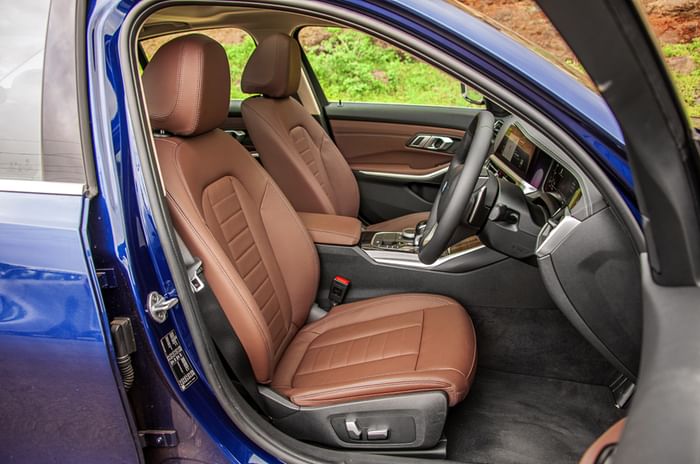
Perhaps the biggest point of contention is the layout of the all-digital instrument cluster. Sure, the screen is high-res and gives prime real estate to the map but the angular speedo and counter clockwise tacho at the other side are just not easy enough to read on the go. BMW traditionalists will sure miss the classic analogue dials.
You will like the iDrive system that’s easy to use. The 320d for India doesn’t get gesture control (it’s there in the 330i M Sport though), but the touchscreen is slick, the customisable home screen gives ready access to frequently used functions and you can even scribble instructions on the touch pad atop the iDrive controller; right-handed drivers will need to be ambidextrous to get it right though. There’s also BMW’s latest voice activated Personal Assistant. Saying “Hey BMW” will get the system’s attention and it can be used to control a fair few functions, such as the climate control system. However, it does get tripped on Indian names every now and then.

Talking features, the 3 Series does get plenty as standard, but there are differences between the trims. The base 320d Sport is well kitted with features such as automatic LED headlights, LED fog lamps, 17-inch alloys, three-zone automatic climate control, power adjustable front seats with a memory function, an electric sunroof, an 8.8-inch touchscreen infotainment system that comes with a 10-speaker audio system, a rear parking camera and rain sensing wipers. However, it misses out on the Apple CarPlay-compatible 10.25-inch infotainment system, the 12.3-inch digital instrument cluster and ambient lighting for the cabin that comes as standard on the 320d Luxury Line.
Switching focus to the all-important rear seat. It’s quite a drop down onto the 3 Series’ rear seats, so getting in (and out) isn’t the easiest of exercises. That said, comfort is better than before. There’s that crucial bit more legroom (and headroom), cushioning is really well-judged, the backrest recline angle is spot-on and there’s even great thigh support on offer. Sure, the middle passenger will feel that they have got a raw deal (the high centre tunnel is to blame), but as a place for two, the 3 Series rear seat works really well.

Of the other things, the 3 Series for India handily comes with a space saver spare tyre that’s neatly concealed under the boot floor. On the flip side, the boot is relatively shallow, so the 3 Series might not be the pick of your cars for airport drops.
What’s it like to drive?
The 3 Series has been launched in India in 330i petrol and 320d diesel forms, and it’s the latter we have with us today. The 320d’s 2.0-litre diesel engine and its 190hp and 400Nm figures might sound all too familiar, but it’s actually not the very same unit that powered the last 3 Series. Twin sequential turbos replace the single twin-scroll turbo, and the change in character is more than evident.
The updated engine gives readier access to power at low speeds, and is consequently friendlier at town speeds. At the same time, there’s more poke in the mid-range, too, so it’s really fulfilling to press down hard on the accelerator. The improved performance reflects in flat-out acceleration times as well. According to BMW’s official figures, the new 320d betters the last gen model’s 0-100kph time by four-tenths, with a time of 6.8sec. Sure, the timings are for launch control-equipped versions, but either way it’s, an amazing figure for a diesel luxury sedan.
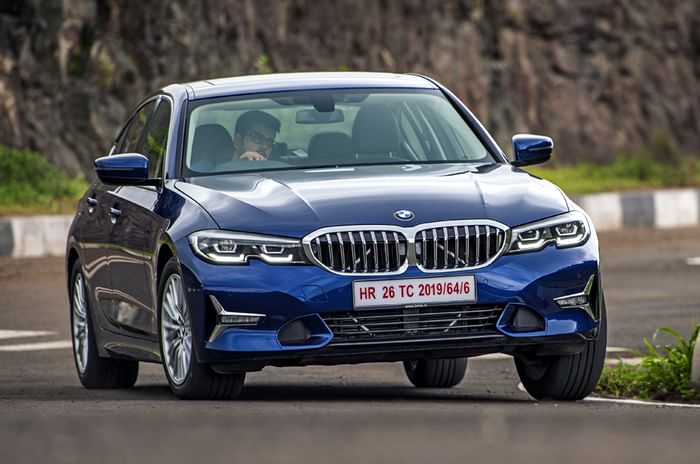
And the latest 320d is not only faster, but quieter too. You hear less of the world outside and particularly less from the engine bay. Up to 2,500rpm or so, the engine runs nice and quiet, and that’s something anyone familiar with the old version of this engine will note; 2,500-5,000rpm does up the decibel levels, but where the older engine sounded buzzy in the top end, the new one merely sounds busy. It’s a crucial difference.
What also adds to comfort is the improved ride quality. The suspension’s all-new damping system offers greater control of the spring, and occupants sure do reap the benefits. Yes, there is still some European car firmness to the low-speed ride, but the suspension rounds off the bumps well and does its works quietly. Generation to generation, what has improved is high-speed comfort. The small ups and downs of the road surface don’t make it to the cabin as much as they used to, so what you have is a more relaxing long-distance car.
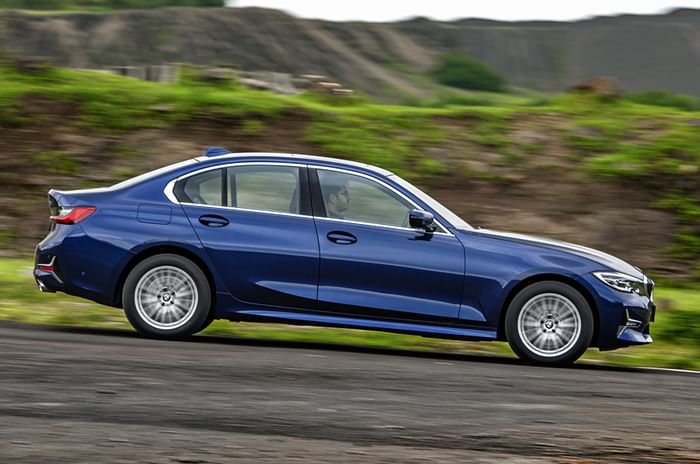
Drivers will also like the steering setup. It’s weighty and confidence-inspiring at high speed, yet light and easy at average town speeds. Ease of use is one thing, but if there’s one area where a 3 Series needs to deliver is handling. The ingredients are there. The move to BMW’s Cluster Architecture has made the car lighter by up to 55kg, it’s 25 percent stiffer, and, as ever, weight distribution is 50:50 front to rear. The news is largely good. There’s loads and loads of grip so you can really push the car hard into your favourite corners without reaching its limits. The new 3 Series also turns in well, but even at its sportiest setting it doesn’t feel quite as agile or sharp as the last one did. Then again, there is a caveat here. Our test car is running on relatively small 17-inch rims with a lot of rubber around them; 3s with 18-inch rims and lower profile tyres are sure to have a very different dynamic character.
Should I buy one?
3 Series prices start at Rs 41.40 lakh, with the 320d topping off at Rs 46.90 for the Luxury Line trim – the 330i M Sport is the range-topper of the model's range and costs Rs 47.90 lakh. Pricing for the diesel 3 Series is quite competitive in comparison to the Mercedes C 220d (Rs 40.20-44.47 lakh), Jaguar XE diesel (Rs 41.34-47.00 lakh) and the Audi A4 35 TDI (Rs 43.39-46.96 lakh). However, the 330i M Sport's prices are on the higher side when compared to the Mercedes-Benz C 200 (Rs 39.90-44.90 lakh), Jaguar XE petrol (Rs 40.61-46.52 lakh) and Audi A4 30 TFSI Rs 41.49-45.07 lakh).
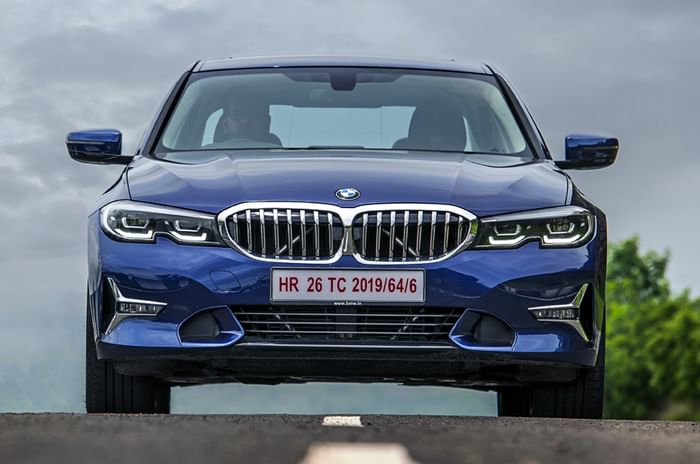
The latest 320d might not be quite the ultimate driving machine but it is fast and fun, no doubt about that. What BMW has also successfully done with this generation of 3 Series is broaden the car’s appeal by improving on refinement, ride and overall comfort – the things that matter greatly in India. In all, you get a more rounded and wholesome package and we don’t see too many people having a problem with that.
All prices are ex-showroom, pan-India
Location Courtesy: Khed City
Click here for BMW India models, prices, reviews, images, videos and more details
Tech Specs 
Copyright (c) Autocar India. All rights reserved.

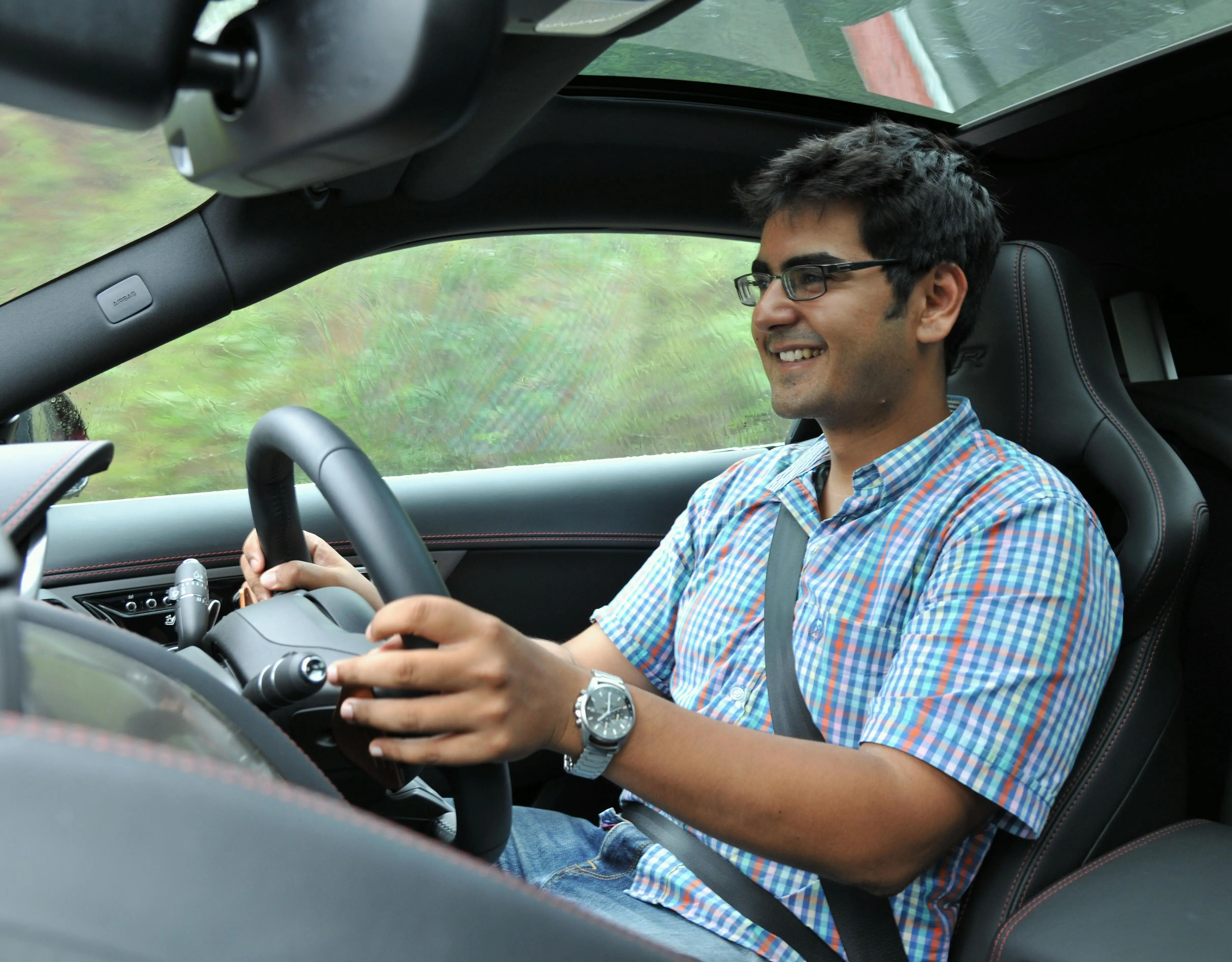
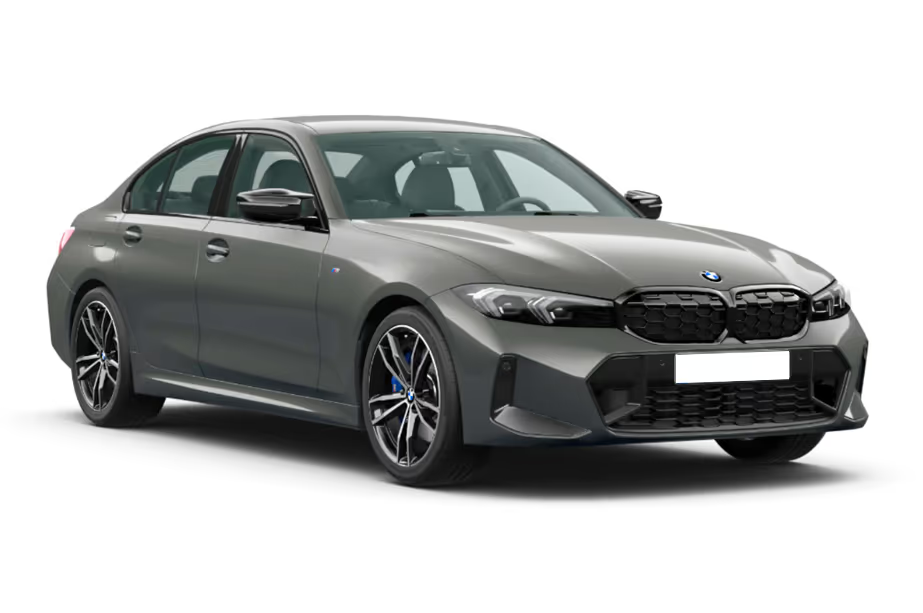
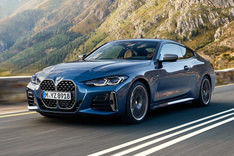





 Price
Price Engine
Engine Transmission
Transmission Dimensions
Dimensions
Comments
Member Login
Personal Details
No comments yet. Be the first to comment.